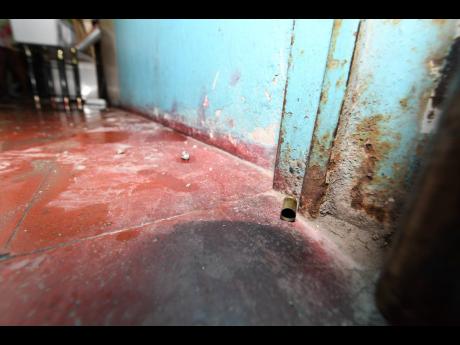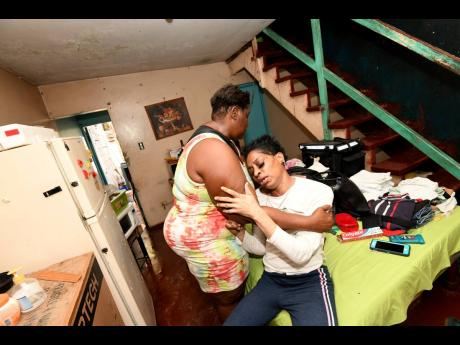Death probe blunder
Police actions on fatal shooting scenes hinder independent investigations, says INDECOM
International best practices for the preservation of the scenes of police fatal shootings are being ignored by local law enforcement, the Independent Commission of Investigations (INDECOM) has charged, arguing that it is hindering probes by the...
International best practices for the preservation of the scenes of police fatal shootings are being ignored by local law enforcement, the Independent Commission of Investigations (INDECOM) has charged, arguing that it is hindering probes by the watchdog agency.
The allegations are many: the removal and/or relocation of bodies, the removal of spent shells, and the disruption of blood spatter and other vital evidence from crime scenes. But according to INDECOM Assistant Commissioner Hamish Campbell, such acts are difficult to prove by sleuths tasked with aiding justice for bereaved families.
Last year, there were 127 fatal shootings by members of the Jamaica Constabulary Force (JCF) and the Jamaica Defence Force combined, while at least five persons have lost their lives at the hands of police this month.
It was not immediately clear how many members of the public have been shot and injured by the security forces this year, but 66 such cases were reported last year.
As per Jamaica’s INDECOM’s Act, instances of fatal shootings must be reported to the commission by the involved officer or his or her commander. But that, too, has been problematic, with INDECOM being informed hours after some police killings have occurred.
In 28 per cent of fatal shooting scenes between April and September last year, INDECOM failed to meet its two-hour response window to fatal shooting scenes. This, Campbell noted, is hindered by distance, terrain, and other factors, including being held back by the police, who, in rare occurrences, have determined that the affected community is too hostile to enter.
Unlike murder scenes, which are usually cordoned and secured until police crime-scene photographers turn up, some police fatal shooting scenes are left unattended, with curious residents and relatives potentially compromising evidence before INDECOM investigators arrive.
“If a crime scene has been tampered with or interfered with by the security forces, it will be very difficult to determine [what happened], especially due to the absence of video evidence, like body-worn cameras,” said Campbell in response to questions from the newspaper.
“INDECOM has received reports from citizens that they had observed what they believe to be officers collecting spent casings and, on occasion, returning to the scene to search for casings.”
The removal of shell casings is a common complaint, said the assistant commissioner, and similarly is the removal of victims, some of whom, according to videos taken by onlookers and viewed subsequently, are believed to be dead, the assistant commissioner noted.
“Ideally, where death has been established, dead bodies should remain and the principles of scene preservation should apply. International best practices refer to the body of the deceased being secured at the scene and made available for forensic photography and independent assessment,” explained Campbell.
“It is recognised that this does not occur in Jamaica. The JCF’s practice has always been to remove bodies from the scene of fatal shootings. Very rarely a body will remain in situ, usually, because the body is in an inaccessible location ... ,” he continued. “At many civilian murder scenes, the body is always secured at the scene for forensic assessment and photography. The same should apply to police homicide events.
Campbell argued that the removal of bodies could hinder effective and independent assessment of scenes and makes it difficult to determine where a person was shot, and whether the circumstances described are correct. He said that the JCF should, at a minimum, photograph and video-recording scenes before removal.
Last Wednesday, Police Commissioner Antony Anderson and his public relations team were asked via email about the protocols of preserving both murder and fatal shooting scenes, the reasons for removing bodies from fatal shooting scenes, and the protocol for removing illegal weapons and turning them over for inspection. Up to press time Sunday, The Gleaner had not received a response.
Meanwhile, the INDECOM Act is not explicit about the procedure for the protection of fatal shooting scenes, but an agreement between the JCF since 2013, which was updated in 2019 and outlined in the constabulary Force Orders, outlines that the investigative body has primacy at fatal shooting scenes and that cops should readily provide information to sleuths.
“The protocols outline what would happen when we get there, that is the recovery of the records, the searching of the scene, and the police are required to control and manage the scene until INDECOM comes,” Campbell said, outlining similar protocols published by the United States Department of State’s Community Oriented Policing Services (COPS) guide for officers involved in fatal shootings.
Among the persons killed by police this year was 20-year-old bike deliveryman Quacie Harriott inside his Zacky Avenue home in Tivoli Gardens, west Kingston, last Monday.
According to the police, Harriott was shot and killed after a confrontation with the lawmen and a Ruger 9mm pistol with seven 9mm rounds of cartridges seized.
On the shooting scene, residents and relatives – an hour after cops hoisted the body into a service vehicle and sped from the scene – denied those claims.
They said that Harriott was gunned down by the cops, who used bleach and water to wash away his blood from the house.
As the residents telephoned INDECOM for its hasty intervention, investigators were held up fives minutes away at the Denham Town Police Station by cops, who had determined that unrest at the scene made the situation too dangerous for them to enter.
Four hours later, they commenced their investigation, long after residents and members of the media had trampled the scene.


